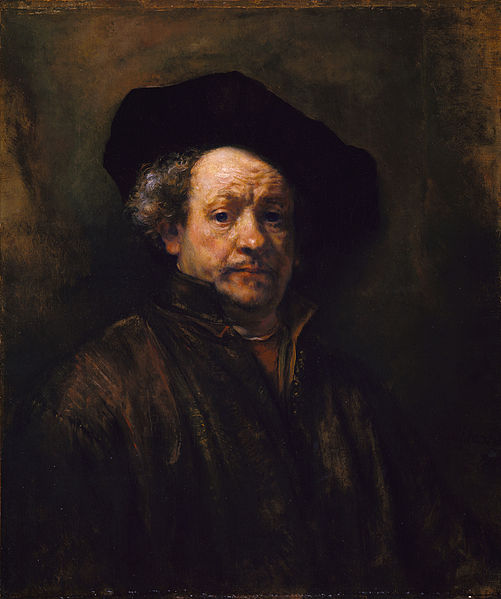| Self-Portrait (Altman) | |
|---|---|
 |
|
| Artist | Rembrandt |
| Year | 1660 |
| Medium | Oil on canvas |
| Location | Metropolitan Museum of Art, New York City |
| Dimensions | 12.44 in × 10.4 in |
| 31.61 cm × 26.5 cm | |
| Rembrandt Famous Paintings | |
| The Night Watch | |
| The Return of the Prodigal Son | |
| Self-Portrait | |
| The Jewish Bride | |
| Danaë | |
| The Mill | |
| The Storm on the Sea of Galilee | |
| The Blinding of Samson | |
| The Three Trees |
Measuring just 12.4 by 10.4 inches, the Self-Portrait (Altman) by Rembrandt van Rijn is a small painting using oils on canvas that was completed by the famous Dutch artist in 1660. It is currently owned and displayed by the Metropolitan Museum of Art in New York.
Altman Self-Portrait
The painting is referred to as the Altman self-portrait. This is a reference to the New York businessman Benjamin Altman, who was a keen collector of Rembrandt’s works. Altman had no children, and he bequeathed his entire art collection to the Metropolitan Museum when he died in 1913.
Rembrandt’s Mood
Rembrandt was 54 when he painted the portrait. At the time, his life was in turmoil. He had fallen out of favor with many critics and sponsors. His reputation was in tatters and all his pupils had abandoned him. He was also in dire financial straits, mainly due to extravagant spending in the past, and had even had to sell his home.
The considerable stress he was under at the time is clearly evident in the painting. The picture is a full-on image of the artist’s face and upper body. With the exception of the actual face, the coloring is mainly dark and gloomy, being mostly shades of brown and black. This almost certainly reflects the painter’s mood at that time.
The face, with its with many wrinkles, makes Rembrandt appear much older than 54. There is a distinct sense of despair in the eyes and the mouth is tightly closed. The painting evokes an overall sense of sadness.
The Artist’s Decline
When compared with another self-portrait he had done the previous year, the artist’s depression and distress is clearly visible. The Amsterdam Painters Guild had introduced a new rule that prevented Rembrandt from trading as a painter because of his circumstances. As a result, Rembrandt did only one more painting before his death in 1669.